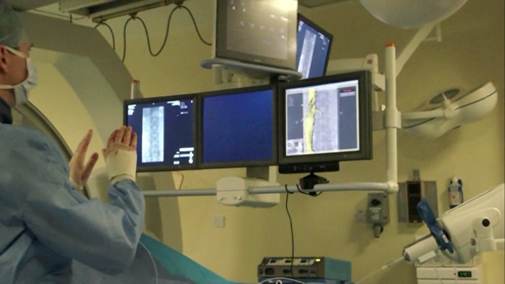By Fabien Petitcolas, Director for Innovation, Europe
At the end of last year, our research laboratory in Cambridge hosted a workshop on body tracking in healthcare. It was an occasion which celebrated the completion of a two-year collaboration with Lancaster University, during which the researchers explored the use of touchless interactions in surgical settings, allowing images to be viewed, controlled, and manipulated without physical contact via the Kinect for Windows sensor.
The Kinect for Windows-based system, which has been widely covered in the popular press, enables surgeons to navigate through and manipulate X-rays and scans during operations, literally with a wave of the hands, without touching the non-sterile surface of a mouse or keyboard. It’s a prime example of the burgeoning field of natural user interface (NUI), which promises to change our relationship with today’s ubiquitous devices.
The workshop brought together experts from academia and industry to discuss the use of Kinect for Windows in medicine—in applications that extend well beyond the operating room. Kinect’s body tracking abilities are already being harnessed for clinical assessments of, for example, children with motor disabilities. One talk at the workshop demonstrated a system in which youngsters with cerebral palsy play simple computer games while Kinect for Windows monitors their movements, providing data that physicians can use to assess the state of the disease.
Other researchers are exploring ways to use Kinect for Windows to evaluate the damage caused by strokes and to create and monitor game-based rehabilitation exercises, many of which can be performed by stroke patients in their own homes. Still other presentations showed how Kinect can assist in diagnosing disorders of the brain and nervous system, including Alzheimer’s and multiple sclerosis. We even saw how the Kinect camera and motion sensors can be utilized to compensate for patient movement during medical imaging—a boon to anyone who’s had to undergo repeat X-rays because he or she breathed during the first imaging.
To read more about this, check out this cover story in the January 2014 issue of Communications of the ACM features some of this work.




